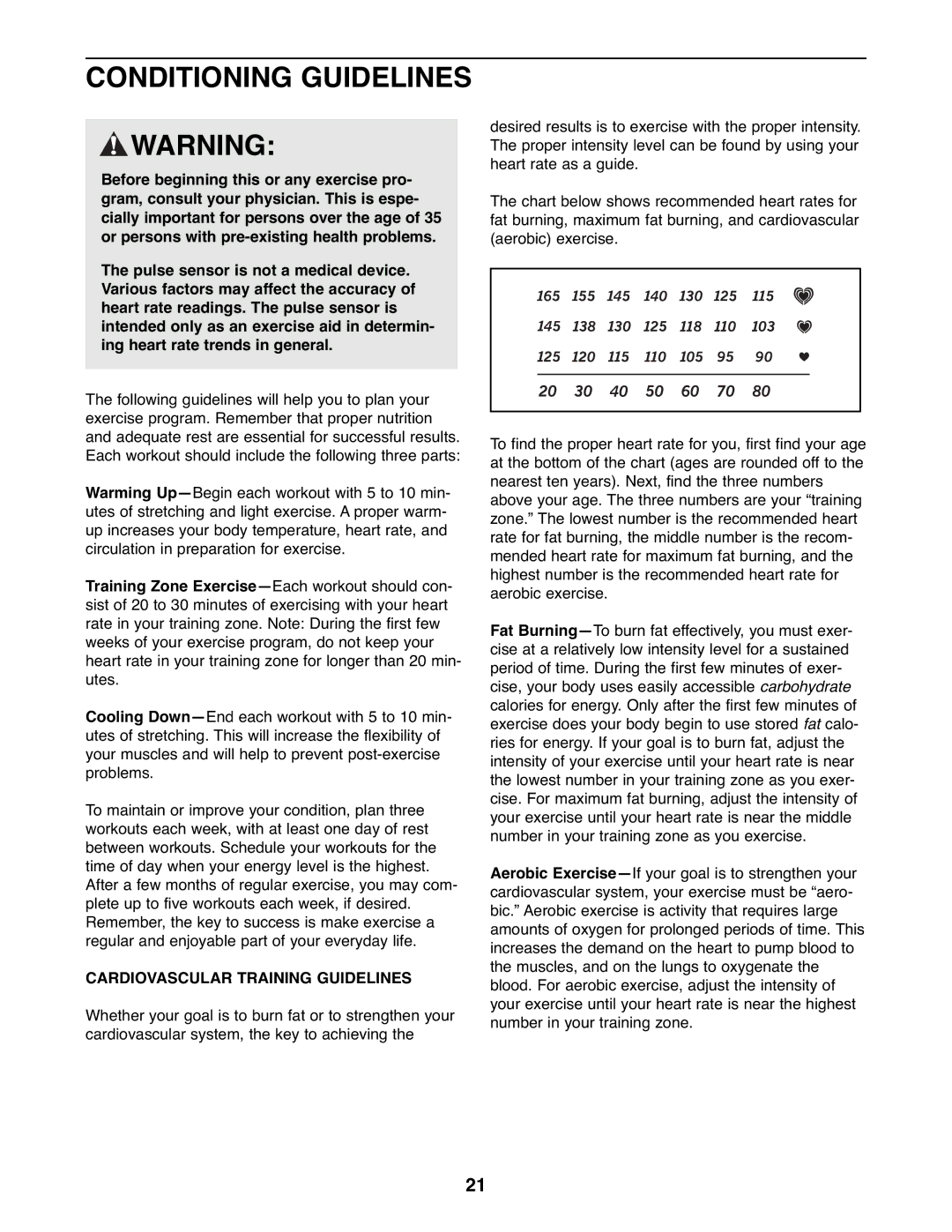
CONDITIONING GUIDELINES
![]() WARNING:
WARNING:
Before beginning this or any exercise pro- gram, consult your physician. This is espe- cially important for persons over the age of 35 or persons with
The pulse sensor is not a medical device. Various factors may affect the accuracy of heart rate readings. The pulse sensor is intended only as an exercise aid in determin- ing heart rate trends in general.
The following guidelines will help you to plan your exercise program. Remember that proper nutrition and adequate rest are essential for successful results. Each workout should include the following three parts:
Warming
Training Zone
Cooling
To maintain or improve your condition, plan three workouts each week, with at least one day of rest between workouts. Schedule your workouts for the time of day when your energy level is the highest.
After a few months of regular exercise, you may com- plete up to five workouts each week, if desired. Remember, the key to success is make exercise a regular and enjoyable part of your everyday life.
CARDIOVASCULAR TRAINING GUIDELINES
Whether your goal is to burn fat or to strengthen your cardiovascular system, the key to achieving the
desired results is to exercise with the proper intensity. The proper intensity level can be found by using your heart rate as a guide.
The chart below shows recommended heart rates for fat burning, maximum fat burning, and cardiovascular (aerobic) exercise.
To find the proper heart rate for you, first find your age at the bottom of the chart (ages are rounded off to the nearest ten years). Next, find the three numbers above your age. The three numbers are your “training zone.” The lowest number is the recommended heart rate for fat burning, the middle number is the recom- mended heart rate for maximum fat burning, and the highest number is the recommended heart rate for aerobic exercise.
Fat
Aerobic
21
